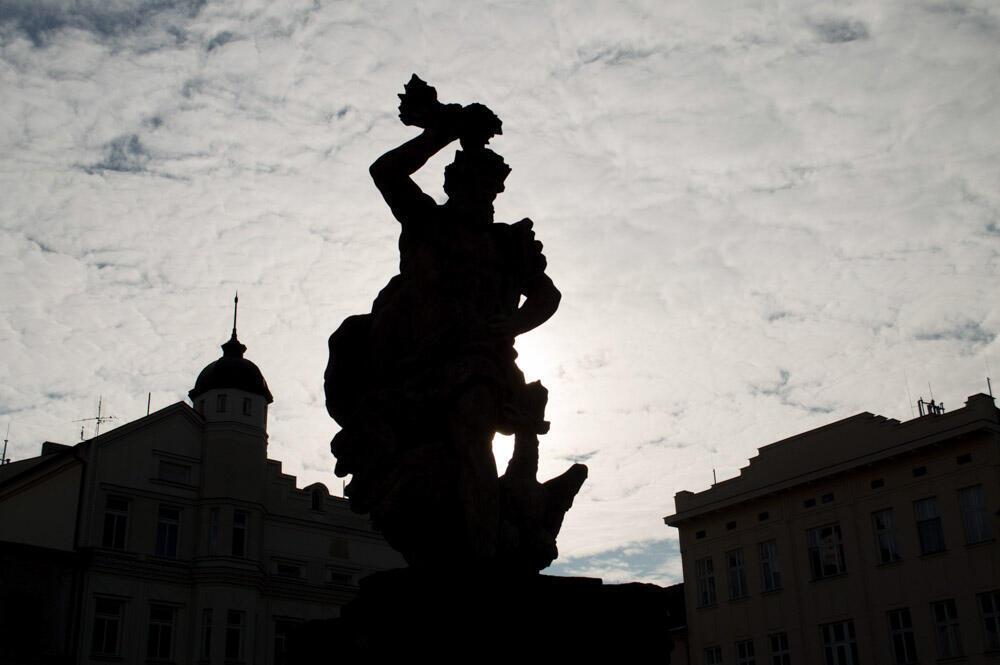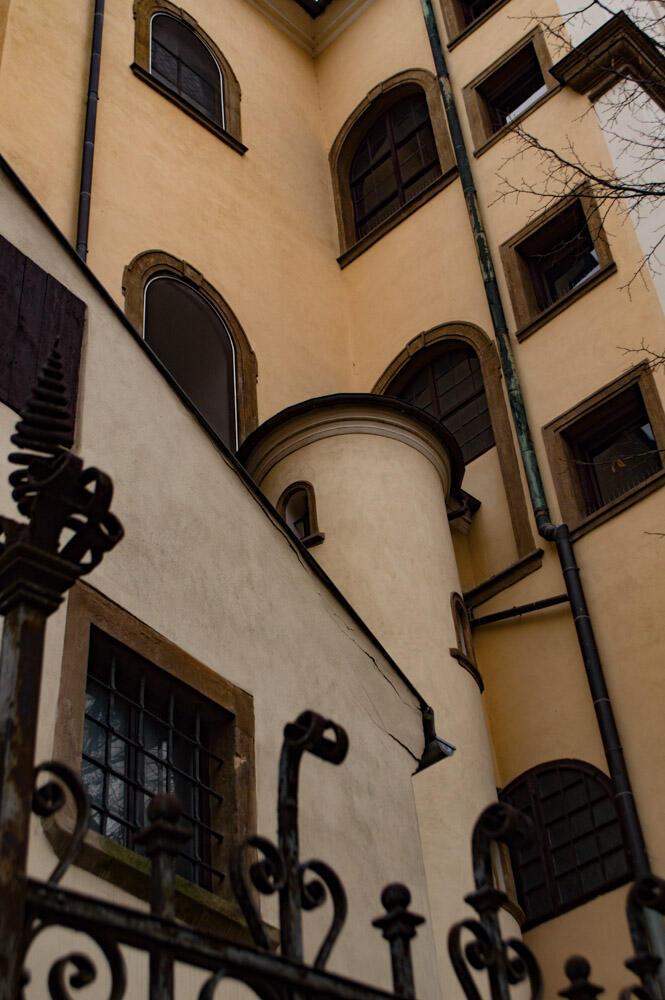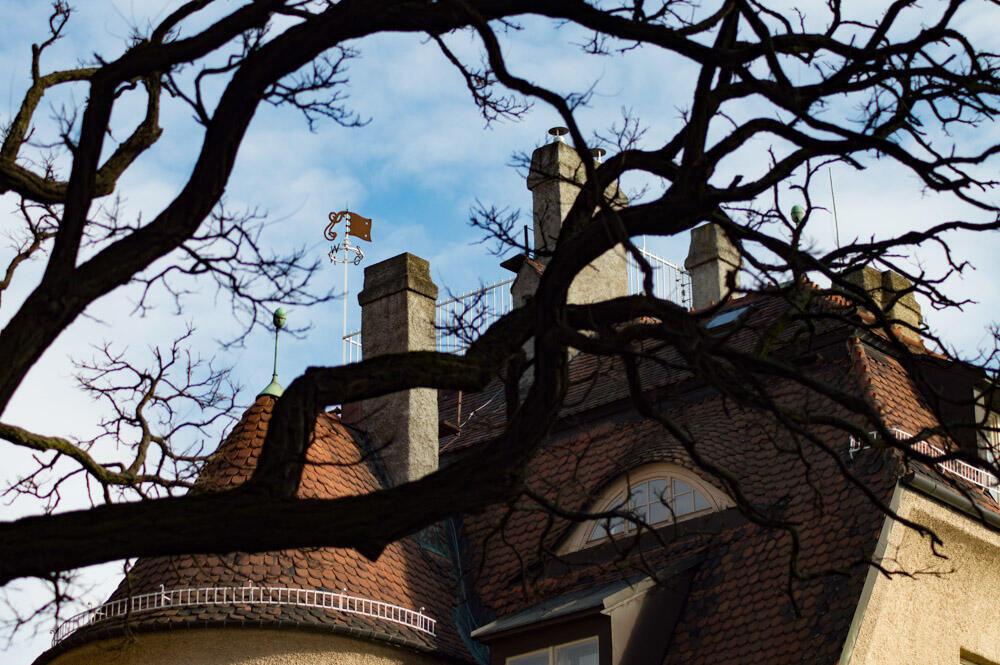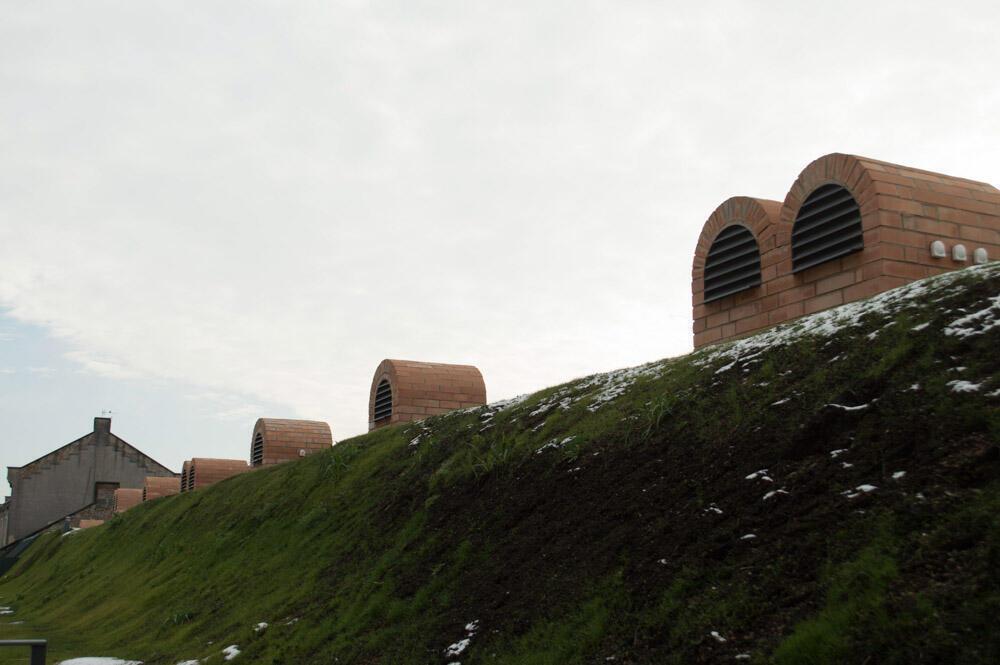The sleepy silence of 3:00 AM and I have become more familiar than I had expected this January. Three consecutive Mondays began with early morning departures and sleep deprived car rides. The first two of these sent me to Olomouc in the Czech Republic. I function poorly on anything less than seven hours of sleep, and as I never failed to stay up late preparing for these trips, they certainly took their toll. Nevertheless, adventure called! And I am always happy to receive it! Spurred by an energy unexpected from just a few hours of sleep, I dressed, ate whatever was on hand, packed my camera and hopped in the car beside my host father. It seems that adventure’s call is a transient whim, though, as before long both trips saw my face buried into the car seat, half-conscious.
Patrik, my host father, travels with work constantly. Mostly across Slovakia, the Czech Republic and Germany. I’m invited to accompany him whenever I wish! So far, I’ve gone to a couple different locations in the lower mountains of Slovakia and twice to the city of Olomouc!
Olomouc is a university town, but it takes that moniker to an entirely different level than we are familiar with in the US or elsewhere abroad. Palacký University, the first founded in Moravia and second oldest in all the Czech Republic, was set up by Jesuit monks in the late 1500s. Their end game was to reestablish Roman Catholicism as the dominate religion in then mostly protestant Czech lands. Regardless of their motivations, the Jesuit universities were a success and had a tremendous effect on the history of the city. In 1848, the faculty and students in Olomouc fought for Czech national identity against the Hapsburg Empire. The movement’s ultimate failure resulted in the closure of the university for a hundred years. It was revived, however, in the 1950s under the name Palacký University of Olomouc as it is today. The students seemingly run the city! A quarter of Olomouc’s 100 thousand people are actively enrolled. Everything from the city’s working hours to tram schedule are based around student activities.
The number of international students is astounding! I heard a motley of different languages over my two trips there and saw a large number of people of non-European ethnicity. I am aware that this cosmopolitan composition is the norm for most large European cities, yet, it is quite a uncommon sight for my eyes. Slovakia isn’t the a very diverse place. This fact has both to do with its relative lack of renown—and therefore influx of people—and a tad with the a majority of the population’s… predisposition. (A topic for another time… or to be avoided entirely. We will see.)
Returning to the streets of Olomouc! Among the most attention grabbing things to adorn the city streets are the seven city fountains. Each of these constructions has a unique history and meaning in local lore.

Listed in no particular order, the first and most grandiose of these fountains is the Caesar Fountain. The man himself gazes from a fearsome steed towards a hill where Roman legions are believed to have once set up an encampment, therefore establishing the foundation upon which Olomouc would grow. The two bearded men below are river gods, representing the Morava and Danube Rivers. They each hold shields emblazoned with the crests that describe the loyalty of Olomouc and Moravia to the Czech ruling family. In 1725, this structure was completed as designed by the young sculptor J.J. Schauberger.

Surrounded by four horses, classically affiliated with the ocean in both Greek and Roman mythology, the Neptune Fountain features the god of the ocean violently plunging his trident towards the earth beneath him. The sculptor M. Mandik is responsible for the creation of this fountain in 1683, although the basin of the fountain was created by the aforementioned Olomouc stonemason V. Schüller.

The Mercury Fountain sits on a busy intersection between multiple tram stops and a shopping center. The atmosphere of the area is rather appropriate, though. The Roman deity of travel and commerce—among other things—Mercury couldn’t seemingly be situated in any better a place.

The Tritons Fountain is crowed with a boy holding a couple sea dogs on chains. Below him play representations of the mischievous Roman sea deities, Tritons. This fountain was designed by the Italian sculptor L. Bernini in 1709.

When first completed in 1707, the Jupiter Fountain in fact depicted St. Florian, who is widely venerated throughout Central Europe. However, a mere twenty years later, he was replaced by a representation of the highest of Roman gods, Jupiter. He strikes a mighty form, wielding a bundle of lightning bolts in one hand while the other rests on his hip.

Unaware that I would be writing such a thorough review of Olomouc’s fountains, I actually failed to acquire of photo the Hercules Fountain. However, you can see the landmark above in a photo from the Olomouc Tourist website (visitolomouc.cz). In this work, Hercules brings his club down against the hydra he faced in legend. On his left side is a checkered eagle, the symbol of Olomouc.

The Arion Fountain stands out among the others for both its composition and age. It is the city’s newest by over 200 years! In 1989, the city council of Olomouc wished to again erect a fountain that reflects the long history of mythology among city art. They conscripted the help of local Olomouc sculptor Ivan Theimer and the Tuscan Architect Angela Chiantelli. They devised a fountain centered around the story of Arion. In classical legend, Arion was a masterful musician. He won a musical competition on the island of Sicily and received a great monetary reward. On his return to trip to Greece, the sailors that manned the boat he traveled on plotted to kill him and steal his wealth. When confronted, Arion requested that he be allowed to perform one last song before his death. This was granted and, before he could be thrown overboard, his lovely melody attracted a pod of dolphins. One of the creatures saved him after he was flung into the sea. Later, the god Apollo would forever memorialize Arion and his dolphin in the constellation Delphinus.

Olomouc is a city at its best in Spring. Though I have not seen it then, over my visits I could imagine the potential of the extensive networks of dormant parks and gardens. All were still a pleasant walk even in their lack of color, though I could not help but see just how greatly improved the city would be in a more verdant month. A few goods came of Winter’s desolation, however.
The Botanical Garden Rozarium runs parallel to the public park opposite of Mlynsky Stream. As the rest of the city, its soil was empty and dull brownish-grey. The gardens themselves are closed to the public in the winter, though that didn’t prevent me from entering an ajar back gate (which I was then unaware was not a legitimate entrance). I wandered the empty paths for some time, wondering what the flora must look like in bloom and enjoying the beauty of the place with no one to disturb my meditations, before realizing that I had somehow stumbled upon the only open entrance and the rest were sealed. I retraced my steps and came back out into the complex which had brought me there, the Museum of the Olomouc Fortress.

Once overgrown and in ruins, the now pristinely authentic wooden gated mounted in high stone walls seized my romantic spirit and dragged me inside the first time I laid eyes on it. Though I could not fully decipher the Czech on the educational signs scattered about, it appeared that the whole property was recently restored to peak condition and is now used as an events center and museum. The place was relatively empty despite being open to the public all year! A fortunate fact as I ended up with some free time before I needed to meet my host father on our second outing to Olomouc. After many hours of continuous bustle, I desired some respite from the noise and proximity in the city. I found it at the auditorium at the Fort. Built into a concave section of the wall, the cement seating provided a comfortable place to sit and rest while I waited. The sun had just escaped the cloudy prison it spent the morning in and the day became rather pleasant. I sat and after a time began to toy around with my camera, mounting it on a tabletop tripod and snapping a few shots of myself.
Describing the entire city in the manner I have been writing above—while certainly deserved by the historic and beautiful city—would take much longer than than one post could support. Therefore, I do believe I will have to return to the topic some other time. For now, you can view a few extra photos from my trips below.
Thank you for taking the time to read.
Signed,
Andrew Dundas








